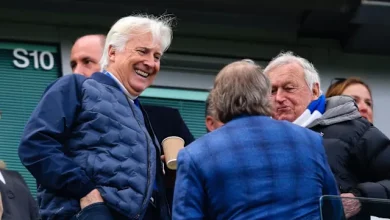Insider suggests that if the Oilers seek to improve their goaltending for next season, Stuart Skinner could be a valuable trade asset in potential roster moves.

The Edmonton Oilers, a franchise renowned for their offensive firepower and star-studded roster, have long faced questions regarding their goaltending stability. As they aim for future playoff success, the necessity to upgrade this critical position becomes increasingly evident. Recent insider insights suggest that Stuart Skinner, the young and promising goaltender, might be a valuable trade asset if the team decides to pursue external upgrades. This analysis delves into the intricacies of Skinner’s value, the rationale behind potential trade considerations, the current state of Oilers’ goaltending, and the broader NHL market dynamics influencing such a move.
The Context: Edmonton Oilers’ Goaltending Situation
Historical Challenges
Historically, the Oilers have struggled with goaltending consistency. From the days of Cam Talbot to Mikko Koskinen, the team has often lacked a reliable, elite netminder to complement their offensive stars. This has impeded playoff success, as strong playoff runs require stable goaltending performance.
Current Roster and Performance
In recent seasons, Stuart Skinner has emerged as a promising young goaltender. Born in 1999, Skinner has shown flashes of brilliance and resilience, becoming a fan favorite and a core piece of Edmonton’s future. However, his experience remains limited, and performance inconsistencies have raised questions about whether he alone can be the franchise’s long-term solution.
Goals for the 2024-25 Season
The Oilers’ management appears to be contemplating whether to continue developing Skinner or to pursue an established, high-caliber goalie via trade or free agency. The decision hinges on Skinner’s projected development trajectory, current market value, and the team’s broader competitive ambitions.
Evaluating Stuart Skinner’s Player Profile
Skillset and Performance Metrics
Skinner’s strengths include quick reflexes, agility, and a calm demeanor under pressure. His play style is characterized by athletic saves, positioning, and resilience. In the 2022-23 season, he posted a .911 save percentage and a 2.88 goals-against average over 36 games, which is promising for a young goalie gaining NHL experience.
Development Trajectory
Skinner’s rapid development signals high potential, yet he still has areas for growth: consistency, handling high-pressure situations, and refining positional play. The team’s coaching staff has emphasized his work ethic and mental toughness, suggesting optimism about his long-term ceiling.
Comparison to NHL Peers
In comparison to other young NHL goalies, Skinner’s metrics are competitive, but he’s yet to establish himself as a top-tier starter. His age and potential make him an attractive asset for teams seeking a promising netminder, but perhaps not yet an unquestioned franchise goalie.
The Rationale for Trading Skinner
Why Would the Oilers Consider Moving Skinner?
While Skinner’s potential is undeniable, the team’s immediate goal of contending for a Stanley Cup might require an upgrade at goaltender to bridge the gap between their offensive firepower and defensive stability. If an entrenched, elite goalie becomes available—either through trade or free agency—the Oilers might see value in acquiring such a player rather than relying solely on Skinner’s development.
Market Conditions and Player Availability
The NHL’s goaltending market is often fluid, with established stars sometimes available via trades or buyouts. Teams like the New York Rangers, New Jersey Devils, or others with veteran goalies seeking new homes could be potential trade partners. Skinner’s youth and potential make him a compelling piece in exchange negotiations.
Financial and Cap Considerations
Trade scenarios would also factor in Skinner’s contract status—he is on an entry-level deal with manageable cap hit—and the salary cap landscape, which influences trade value and team flexibility. Moving Skinner could also free up cap space for other roster adjustments.
Asset Management and Future Planning
The Oilers could view Skinner as a valuable asset to leverage in acquiring an established netminder, especially if the team believes that their championship window requires immediate and reliable goaltending rather than prolonged development.
The Potential Trade Value of Stuart Skinner
Market Value and Comparable Trades
Assessing Skinner’s value involves analyzing recent NHL trades involving young goalies, such as the trade of Jack Campbell to Edmonton or other comparable deals. While goalies are notoriously unpredictable, Skinner’s age, potential, and recent performance position him as a potentially high-value asset.
Trade Scenarios and Potential Targets
Possible trade targets for the Oilers could include:
Veteran goalies in the final year of their contracts seeking a change of scenery, such as a veteran like Cam Talbot or Robin Lehner.
Established starters on contending teams looking for a change, like the aforementioned Rangers or Devils.
Young, proven starters who might be available due to team needs or cap constraints.
Trade Value Components
Skinner’s trade value would likely include:
Draft picks (first-round or high-value picks to acquire a top-tier goalie).
Prospects or young players (to balance the trade).
Conditional picks or players depending on the success or performance of the acquired goaltender.
Trade Value in Terms of NHL Economics
Goalies of Skinner’s profile often fetch significant assets, especially if they are under team control and show potential. The Oilers might need to part with a combination of picks and prospects to secure a consistent, proven star.
Strategic Considerations for the Oilers
Balancing Development and Contention
Trading Skinner could accelerate the team’s championship window but also risks losing a promising talent. Conversely, relying on Skinner with supplementary veteran help could be a cost-effective approach, but may not provide the immediate stability needed for deep playoff runs.
Impact on Team Dynamics
Introducing a veteran goalie can bring leadership and experience, especially in playoff scenarios, but it can also alter team chemistry. Conversely, promoting Skinner might foster a culture of development and internal growth.
Cap Flexibility and Financial Implications
The trade process involves evaluating how the acquired goalie’s contract fits into Edmonton’s salary cap structure. A high-priced veteran might limit future moves, while a cheaper, younger option could allow more roster flexibility.
Long-term vs. Short-term Goals
The decision to trade Skinner hinges on whether the Oilers prioritize immediate success or long-term development. If they believe a veteran goalie can deliver immediate results, trading Skinner becomes a strategic move to maximize their current roster.
Broader NHL Market Dynamics
Goalie Market Trends
Goalies are often the most unpredictable assets in the NHL, and trades are rare and complex. The market fluctuates based on injuries, team needs, and salary cap constraints. The 2024 offseason could see a surge in goalie trades if teams seek to upgrade or rebuild.
Trade Deadline and Offseason Opportunities
The timing of a Skinner trade could be influenced by upcoming trade deadlines or offseason negotiations, with teams weighing the risk of moving young assets versus acquiring proven veterans.
Previous Trades and Lessons Learned
Past goalie trades, such as the Matt Murray trade or the Robin Lehner swap, highlight the risks and rewards of trading for or away goaltenders. The Oilers will analyze these precedents to inform their decision.
Future Implications for the Oilers
If Skinner Is Traded
The team might acquire an established starter, boosting playoff confidence.
The development pipeline for goalies could be accelerated or disrupted.
Cap space might be freed up for other roster needs.
If Skinner Remains
The team invests in developing a potential franchise goalie.
It might risk playoff success if Skinner does not reach elite status.
The team maintains internal stability and cap flexibility.
Long-term Outlook
The decision influences Edmonton’s competitive trajectory over the next 3-5 years. Trading Skinner could yield immediate results but might leave the team vulnerable long-term if the acquired goalie declines or leaves. Keeping Skinner allows for internal growth but requires patience and confidence in his development.
Conclusion
The potential trade value of Stuart Skinner positions him as a pivotal asset in Edmonton’s strategic plans for the upcoming NHL seasons. While the Oilers’ immediate need to upgrade their goaltending is clear, the decision to trade Skinner involves weighing the risks and rewards carefully. His youth, potential, and recent performance make him a highly attractive commodity in the NHL market, capable of netting significant assets if moved. Conversely, if the team believes in his long-term development, they may opt to retain him and supplement with veteran help. Ultimately, the decision will hinge on the team’s assessment of Skinner’s ceiling, the availability of suitable goaltenders in trades or free agency, and their championship ambitions. The NHL’s dynamic market and the inherent unpredictability of goaltender performance add layers of complexity, making this a nuanced and strategic crossroads for the Edmonton Oilers. Whether Skinner remains in Edmonton or becomes a trade chip, his value is a reflection of both his potential and the franchise’s current aspirations.









